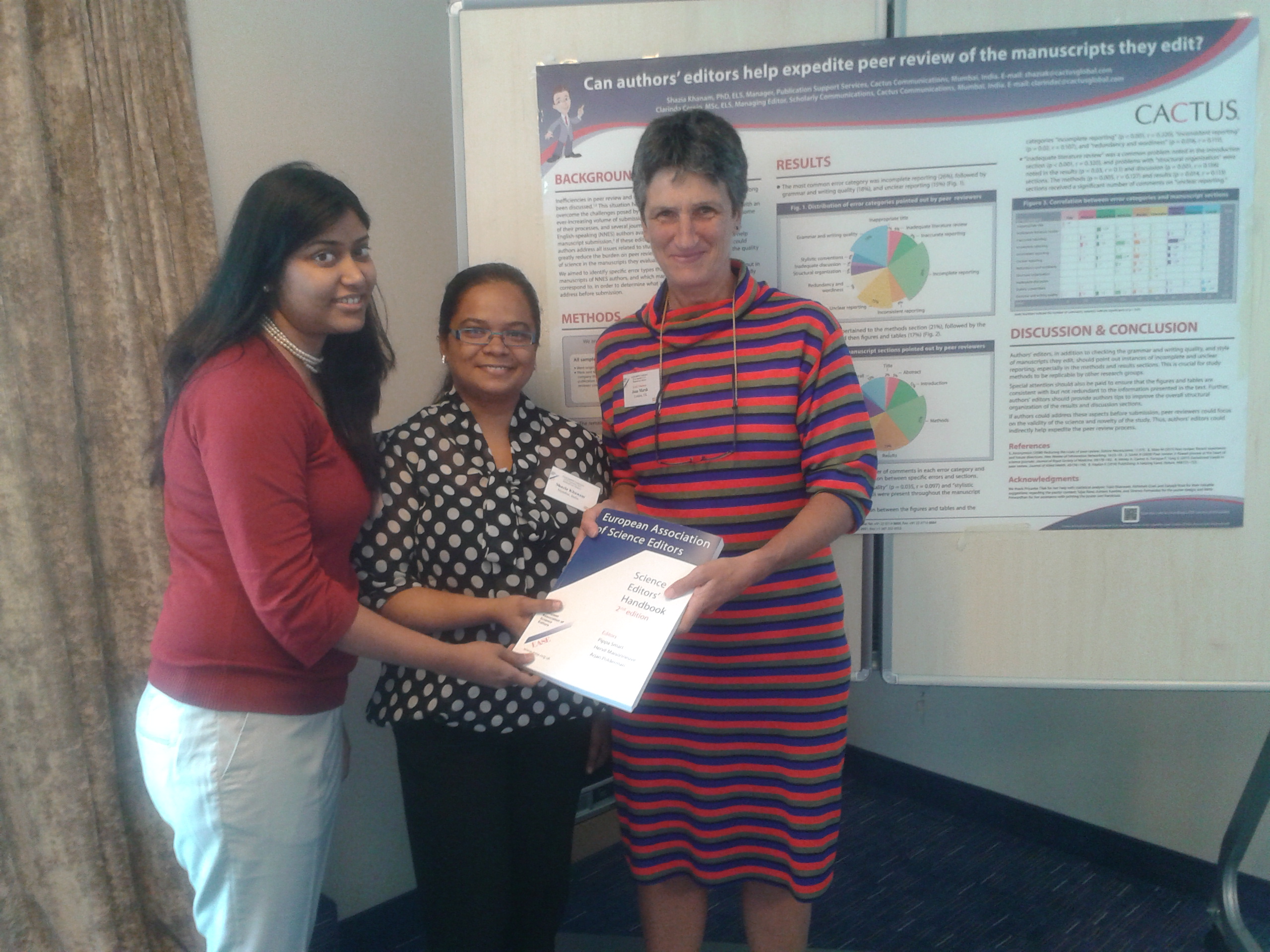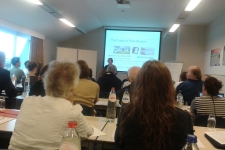Shazia Khanam, Manager, Publication Support Services, and Clarinda Cerejo, Managing Editor, Scholarly Communications, had a memorable time at the first joint conference of the European Association of Science Editors (EASE) and the International Society of Managing and Technical Editors (ISMTE), in Blankenberge, Belgium, September 23-24.
Shazia and Clarinda presented a poster entitled “Can authors’ editors help expedite peer review of the manuscripts they edit?” and won the Best Poster Award. This marks the fourth consecutive Best Poster Award for CACTUS at international conferences. The poster abstract can be viewed here.
The meeting itself was very interesting and informative, attended by about 85 editors and publication professionals. Interactions over meals, and discussions during breakout sessions provided plenty of food for thought on various current hot topics in the industry, such as peer review, publication ethics, and new impact measures.
Keynote speaker, Dr. Irene Hames, Publishing Consultant and Council Member of the Committee on Publication Ethics (COPE) described the broken state of the peer review process and discussed the future of peer review. She mentioned that there are currently about 28,000 peer-reviewed journals, reviewing 1.7-1.8 million manuscripts a year, and spending approximately 15 million hours per year on ultimately rejected manuscripts. Her perception, based on various survey results, is that researchers would like to improve the peer review process, not replace it. In her view, good practice and quality in peer review should be independent of the publication model the journal adopts. She called for greater transparency from journals with regard to the format of peer review they employ and details such as review time and rejection rate. Using the maxim “Reviewers advise; editors decide!”, she emphasized on the need for the journal editors to be the final decision makers in the peer review process and to not pass their responsibilities off onto reviewers. She also described portable peer reviews—where authors can take their rejected manuscript along with the peer reviewer comments to a new journal—as a system that can save time, but journals should then be clear about “who owns the peer reviews.” The talk concluded with the encouraging view that the real peer review begins after publication, when a published paper is scrutinized by the entire research community and the public at large. “People who succeed with innovations in peer review will be those who win the hearts and minds of the research community.”
The meeting also saw the launch of the 2nd Edition of the Science Editors’ Handbook, comprising 56 chapters written by 40 international authors. The handbook covers a wide range of topics related to editing and publication and will prove to be a valuable resource for all editors and publishers.
We look forward to participating in other meetings organized by EASE and ISMTE!











